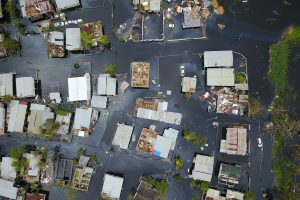Introduction
In an increasingly uncertain world, the real estate industry stands as a resilient frontier, crucial in disaster preparedness and community resilience. In this article, we’ll delve into the pivotal role of real estate in disaster preparedness, guided by the expertise of disaster management expert, Dr. Emily Harris. Join us on this exploration of how real estate contributes to the creation of resilient communities in the face of adversity.
Meet Dr. Emily Harris: Your Guide to Disaster Management
Dr. Emily Harris is a distinguished expert in disaster management with extensive experience in disaster preparedness and response. Her insights provide a comprehensive understanding of how real estate serves as a cornerstone of disaster resilience.
Real Estate and Disaster Preparedness: A Symbiotic Partnership
Before we delve into real estate’s role in disaster preparedness, let’s acknowledge the symbiotic relationship between these two crucial domains.
Table: Real Estate and Disaster Preparedness
| Sector | Role |
|---|---|
| Real Estate | Essential infrastructure for shelter and recovery |
| Disaster Preparedness | Enhancing community resilience and safety |
This table underscores the interdependence of real estate and disaster preparedness, with real estate serving as the bedrock of critical infrastructure during disasters and disaster preparedness enhancing community resilience and safety.
Real Estate’s Multifaceted Role in Disaster Preparedness
The real estate industry contributes significantly to disaster preparedness, extending beyond the provision of physical shelter during crises.
Table: Real Estate’s Contributions to Disaster Preparedness
| Role | Description |
|---|---|
| Infrastructure Resilience | Constructing disaster-resistant structures |
| Urban Planning | Designing resilient communities |
| Risk Assessment and Management | Identifying and mitigating vulnerabilities |
| Recovery Support | Facilitating post-disaster recovery |
This table offers insights into how the real estate industry actively contributes to disaster preparedness, including its role in building resilient infrastructure, designing disaster-resistant communities, managing risks, and supporting recovery efforts.
Lessons from the Field: Case Studies in Resilient Real Estate
To comprehend the real impact of real estate in disaster preparedness, let’s explore practical case studies that showcase its transformative potential.
Table: Case Studies in Resilient Real Estate
| Case Study | Key Takeaways |
|---|---|
| Seismic Retrofitting | Reinforcing buildings for earthquake resistance |
| Floodplain Management | Implementing flood mitigation strategies for riverfront properties |
| Wildfire-Ready Communities | Creating fire-adaptive communities in wildfire-prone regions |
| Disaster-Response Centers | Establishing disaster-ready facilities for rapid response |

These case studies exemplify how innovative real estate approaches, from seismic retrofitting to floodplain management and wildfire-resilient communities, are making a significant impact in disaster preparedness.
Beyond Real Estate: Broader Impact on Society
Real estate’s influence extends beyond disaster preparedness, impacting various facets of society.
Table: Broader Impact of Real Estate on Society
| Impact | Description |
|---|---|
| Community Resilience | Fostering community cohesion and preparedness |
| Economic Stability | Ensuring property value and financial security |
| Policy Advocacy | Influencing disaster preparedness policies |
| Public Awareness | Promoting disaster resilience education |
This table highlights how real estate’s broader influence extends to diverse aspects of society, from community resilience to economic stability, policy advocacy, and public awareness.
Building Resilience Together: A Collaborative Effort
Building resilience in our communities is a collective endeavor that requires collaboration across sectors.
Table: Collaborative Efforts for Building Resilience
| Collaboration | Description |
|---|---|
| Public-Private Partnerships | Joint initiatives for disaster resilience |
| Education and Training | Equipping communities with disaster readiness |
| Policy Development | Crafting effective disaster preparedness policies |
| Research and Innovation | Advancing technologies for resilience |
This table serves as a roadmap for collaborative efforts in building resilience, emphasizing the importance of public-private partnerships, education, policy development, and research and innovation.
Conclusion
As we’ve journeyed through the critical role of real estate in disaster preparedness, guided by Dr. Emily Harris, we’ve witnessed how it serves as a resilient frontier, pivotal in creating safe havens during times of crisis. Real estate is not just about properties; it is about safeguarding lives and enhancing the resilience of our society.
This partnership between real estate and disaster preparedness is a testament to our capacity to adapt and thrive in the face of adversity. Whether you are a real estate professional seeking innovative approaches or an individual intrigued by the evolving role of the industry, remember that the real estate sector is a linchpin of disaster resilience, ensuring our communities stand strong and united in the face of uncertainty.



